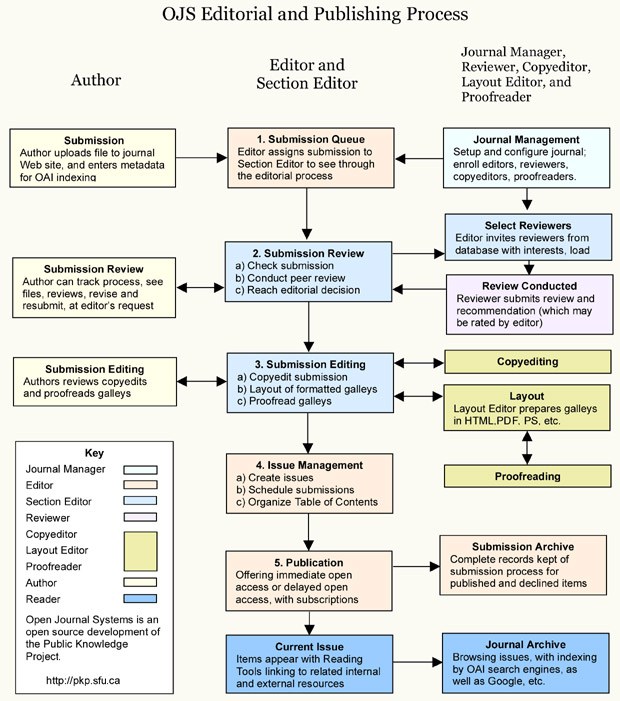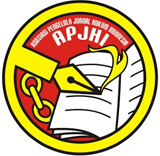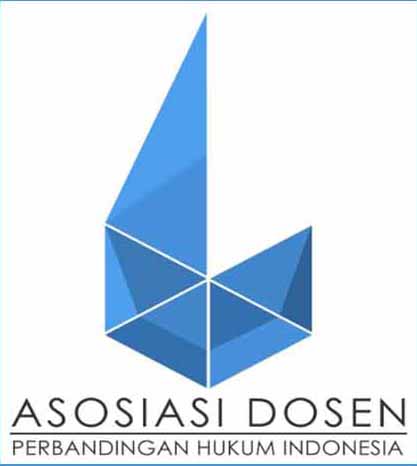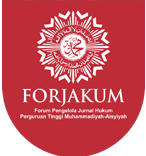- Focus and Scope
- Section Policies
- Peer Review Process
- Publication Frequency
- Open Access Policy
- Publication Ethics
- Publication Fees
- Publishing Process
- Plagiarism Policy
- Indexing
- Author and Subject Index
- Journal History
- Retraction, Withdrawal and Correction Policy
- Archiving
Focus and Scope
Jurnal Media Hukum (JMH) is an international legal journal that publishes research and theoretical articles related to various legal fields. The journal aims to provide scholarly and authoritative articles that discuss legal issues of current importance to both academic research and legal practice. JMH has a national and international readership and publishes refereed contributions from authors around the world. The journal also publishes review articles, but only for selected or invited authors, containing critical notices of recently published books.
JMH addresses specific issues on private law, criminal justice, constitutional law, human rights, administrative law, international law, and Islamic law. JMH publishes peer-reviewed articles to increase the efficiency of the process and ensure the quality of published articles.
JMH extends its warm welcome for authors to submit their research or theoretical articles that contribute to the development of legal knowledge in these fields.
The journal warmly welcomes contributions from scholars with related disciplines. Novelty and recency of issues, however, are the priority in publishing.
Section Policies
Front Page
Articles
Book Review
Peer Review Process
Peer Review Process
To maintain the highest level of publication quality, JMH adheres to a policy of double-blind peer review. All research articles published in the JMH undergo a rigorous peer review procedure, which consists of the following fundamental components:
- JMH is using a two-stage procedure: Your manuscript will first be evaluated by the editorial team for acceptability for publishing in the journal after the technical review. If appropriate, it will then be given to one of the editors to handle the evaluation and decision-making process.
- Your work will be assigned to an Editor if your submission fits JMH's requirements and scope. Reviewers who are regarded as experts in their fields will be selected and contacted by the editor. Peer review is a volunteer service, therefore it can take some time but be assured that the editor will follow up with reviewers on a regular schedule if they don't respond right away. The status will remain "Under Review" during this time.
- It is also possible that the Editor will determine that your submission does not satisfy the journal's standards or scope and so will not be further evaluated. In such a condition, the editor will promptly tell you that your paper has been rejected and may suggest an alternative publication.
Peer review of referred papers:
The JMH editors will promptly determine whether to accept, reject, or seek adjustments to submitted manuscripts based on the reviews and editorial insights from the Reviewers. Moreover, Editors have the option to seek additional evaluations as necessary. When the Editors determine that additional review is necessary, the authors will be notified. The editor will evaluate submitted articles based on the topic and writing style described in the journal guidelines. To maintain academic quality requirements, all articles undergo double-blind peer review, in which the reviewer and author identities are concealed from each other during the review process. In brief, these are the steps:
- Manuscript Submission (by author).
- Manuscript Evaluation and Selection (by manager and editors).
- Editors have the authority to immediately accept, reject, or evaluate submissions. Prior to further processing steps, each article undergoes a Turnitin plagiarism check.
- Manuscript Reviewing Process (by reviewers).
- Notification of Manuscript Acceptance, Revision, or Rejection (by editor to author based on reviewer's comments).
- Manuscript Revision (by author)
- If the Editor is satisfied with the revision, notification for acceptance (by the editor).
- Galley proof and publishing process.
The peer-reviewing process is divided into rounds, with stages 1 through 5 considered as the first round. The editor or editorial board weighs the suggestions made by the peer reviewers before arriving at the final decision. The most common decisions are the following:
- Accepted without any changes.
- Accepted with minor revisions, indicating that the manuscript is suitable for publication but requires some limited modifications to meet the necessary standards.
- Accepted with major revisions, implying that the manuscript needs substantial changes before it can be reconsidered for publication.
- Rejected, which usually occurs if the manuscript falls outside the journal's scope and aims, has significant technical or descriptive issues or lacks clarity in presentation.
Publication Frequency
JURNAL MEDIA HUKUM (JMH) is published twice a year in June and December
Open Access Policy
This journal allows for immediate free access to the work and permits any user to read, download, copy, distribute, print, search, or link to the full texts of articles, crawl them for indexing, pass them as data to software, or use them for any other lawful purpose.
Publication Ethics
Jurnal Media Hukum henceforth referred to as "JMH," is a distinguished journal that undergoes peer review, published by the Faculty of Law Universitas Muhammadiyah Yogyakarta in Indonesia. It is accessible in both print and online formats and upholds a high standard of publication ethics, refraining from all forms of plagiarism. This declaration elucidates the ethical conduct of all parties involved in the publication process, including the author, editor-in-chief, editorial board, peer-reviewers, and publisher (Faculty of Law Universitas Muhammadiyah Yogyakarta). The aforementioned ethical practices align with the Best Practice Guidelines for Journal Editors put forth by COPE that has been written on http://publicationethics.org/resources/guidelines.
Faculty of Law Universitas Muhammadiyah Yogyakarta as publisher of JMH takes its duties of guardianship over all stages of publishing seriously and we recognize our ethical behavior and other responsibilities. We are committed to ensuring that advertising, reprint or other commercial revenue has no impact or influence on editorial decisions. In addition, the Faculty of Law Universitas Muhammadiyah Yogyakarta and Editorial Board will assist in communications with other journals and/or publishers where this is useful and necessary.
Section A: Publication and authorship
- Each manuscript submitted undergoes a rigorous peer-review process by expert reviewers in the relevant field.
- Our review process is a double-blind peer review, ensuring impartiality.
- During the review, we consider factors such as relevance, originality, significance, soundness, language, and readability.
- Manuscripts can be accepted, accepted with revisions, or rejected. However, if authors are advised to revise and resubmit, acceptance is not guaranteed.
- Rejected articles will not be reconsidered.
- Our acceptance of papers is subject to compliance with legal requirements, such as those governing libel, copyright infringement, and plagiarism.
- JMH adheres to the principle of not allowing research to be published in multiple publications.
Section B: Authors’ Duties
- The authors must ensure accurate reporting standards of original research, presenting an objective discussion of its significance and including sufficient detail and references to permit others to replicate the work. Fraudulent or knowingly inaccurate statements constitute unethical behaviour and are unacceptable.
- The authors must provide raw data in connection with a paper for editorial review, should be prepared to provide public access to such data if practicable, and should in any event be prepared to retain such data for a reasonable time after publication.
- The authors must ensure that they have written entirely original works, and if the authors have used the work and/or words of others that this has been appropriately cited or quoted.
- The authors must not in general publish manuscripts describing essentially the same research in more than one journal or primary publication. Submitting the same manuscript to more than one journal concurrently constitutes unethical publishing behaviour and is unacceptable.
- The authors must always give proper acknowledgement of sources, citing publications that have been influential in determining the nature of the reported work.
- The authors must ensure authorship is limited to those who have made a significant contribution to the conception, design, execution, or interpretation of the reported study, listing all appropriate co-authors and ensuring all co-authors have seen and approved the final version of the paper and have agreed to its submission for publication.
- The authors must disclose any financial or other substantive conflicts of interest that might be construed to influence the results or interpretation of their manuscript and disclose all sources of financial support for the project.
- The authors must promptly notify the journal editor or publisher and cooperate with the editor to retract or correct the paper when they discover a significant error or inaccuracy in their own published work.
Section C: Reviewers’ Responsibilities
- The reviewers must maintain confidentiality and treat all information regarding papers as privileged information.
- Reviews should be conducted objectively and without the personal criticism of the author.
- The reviewers must express their views clearly and support them with arguments.
- Relevant published work that has not been cited by the authors must be identified by the reviewers.
- The reviewers must bring to the Editor in Chief's attention any substantial similarity or overlap between the manuscript under consideration and any other published paper that they have personal knowledge of.
- Manuscripts that present conflicts of interest resulting from competitive, collaborative, or other relationships or connections with any of the authors, companies, or institutions connected to the papers should not be reviewed by the reviewers.
Section D: Editors’ Responsibility
- The editors hold complete responsibility and authority to either accept or reject an article, as well as being accountable for the overall quality and content of the publication.
- When attempting to enhance the publication, editors must take into consideration both the needs of the authors and the readers.
- Editors must uphold the integrity of the academic record and ensure that the papers' quality is maintained at all times.
- If necessary, editors must publish errata pages or make any required corrections.
- Editors must be fully aware of research funding sources to maintain transparency and avoid any potential conflicts of interest.
- The decision to accept a paper must be based solely on its originality, importance, relevance to the publication's scope, and clarity.
- Editors must not overturn previous decisions or reverse their own without valid justification.
- The anonymity of reviewers must be preserved to maintain confidentiality.
- All research material published must adhere to globally recognized ethical guidelines.
- Editors should only accept a paper when they are reasonably confident of its authenticity.
- Editors must take appropriate action if they suspect misconduct, regardless of whether the paper has been published or not, and must do their best to obtain a resolution to the problem.
- Editors cannot reject papers based solely on suspicion but require evidence of misconduct before taking any action.
- Conflicts of interest between staff, authors, reviewers, and board members must be avoided at all times.
Publication Fees
This journal charges the following author fees.
Article Submission: FREE
Editorial Processing: FREE
Article Publication: 300 (USD)
If your article is accepted for publication, you will be charged an Article Publishing Fee to cover publication expenses.
If you are unable to pay these costs, you will have the option to waive each one. We do not wish for fees to impede the dissemination of valuable works.
Publishing Process

Plagiarism Policy
Plagiarism screening will be conducted by Jurnal Media Hukum Editorial Board using Turnitin App
- Self-plagiarism and plagiarism are both forbidden;
- The author(s) must ensure that their works are completely original, and if they have cited or quoted the words or works of others, they must do so properly.
- In general, authors should not submit virtually identical findings to many journals or primary publications. It is against the norms of publication to submit the same work to many journals at once; doing so is inappropriate.
- Always give credit to others when credit is due for their work. Authors are expected to cite books that contributed define the nature of the reported work.
Working Process:
- Editorial Team manually reviewing the content on offline and online databases (verifying proper citation and quotation); and
- Editorial Team utilising Turnitin software. The board will immediately reject the manuscript if there is proof of plagiarism (more than 25%).
Journal History
| July, 2023 | |
| March, 2023 | Starting from Volume 30, Issue 1 (2023), published with the new policy regarding author guidelines and template |
| June, 2022 | Starting from Volume 28, Issue 1 (2022), published with the new policy regarding author guidelines, template and licence |
| December, 2020 | Starting from Volume 27, Issue 2 (2020) published with international authors and reviewer |
| August, 2020 | Accredited by ARJUNA the Ministry of research Technology and Higher Education, the Republic of Indonesia. Inexed in "SINTA 2" based on Decree No. 148/M/KPT/2020 |
| June, 2019 | Starting from Volume 26, Issue 1 (2019), just accept and publishes in English version. |
| October, 2018 | Accredited by ARJUNA, the Ministry of Research Technology and Higher Education, the republic of Indonesia. Indexed in SINTA 2 based on Decree No. 30/E/KPT/2018 |
| 2018 | indexed in GARUDA (Garba Rujukan Digital) |
| 2016 | Accredited by the Ministry of Research Technology and Higher Education, the republic of Indonesia Rank "B" based on Decree No. 36a/E/KPT/2016 |
| 2016 | Recieved E-ISSN from the Indonesian Institute of Sciences (Center for Data and Scientific Documentation) |
| 2015 | Indexed in DOAJ |
| June, 2015 | The first online issue, Volume 22, issue 1 (2015) |
| 2011 | Accredited by the Ministry of Research Technology and Higher Education, the republic of Indonesia Rank "B" based on Decree No. 81/DIKTI/Kep/2011 |
| 2008 | Accredited by the Ministry of Research Technology and Higher Education, the republic of Indonesia Rank "B" based on Decree No. 43/DIKTI/Kep/2008 |
| 2005 | Accredited by the Ministry of Research Technology and Higher Education, the republic of Indonesia Rank "B" based on Decree No. 26/DIKTI/Kep/2005 |
| 1993 | Recieved -PISSN from the Indonesian Institute of Sciences (Center for Data and Scientific Documentation) |
| March, 1993 | The first issue (printed), Volume 1, Issue 1, 1993 |
| .... | ..... |
| .... | ..... |
Retraction, Withdrawal and Correction Policy
Retraction, Withdrawal and Correction-Policy
Policy Statement
The Journal Media Hukum acknowledges that the author(s) have worked precisely in preparing the manuscript and peer-review procedures will be carried out by the Editors.. However, for research purposes, there is also the possibility for published papers to be removed or even withdrawal
It is not lighly to do and can only be done under exceptional circumstances..
Consequesntly, corrections, clarifications, retractions and apologies, if necessary, will also be carried out with strict criteria to preserve confidence in the authority of its electronic archives. Our dedication and strategy are to preserve the quality and completeness of relevant scientific documents in the collections of researchers and librarians.
Content Integrity and Maintenance
The Jurnal Media Hukum recognizes the importance to scholars and librarians of the integrity and completeness of the scholarly record and attaches the utmost importance to preserving confidence in the authority of its electronic archive. Clicking on the CrossMark icon will remind the reader of the current status of the document and will also provide additional publication record information on the document. Applying the CrossMark icon is a promise made by the Jurnal Media Hukum to keep content published and warn readers to change as and when occurred.
Article Retraction
Jurnal Media Hukum is committed to conduct its part in upholding the credibility of the scholarly record, and it is therefore appropriate, on occasion, to remove the article(s). Article(s) can be removed if:
There is a significant scientific mistake that may invalidate the conclusions of the article, for example, there is strong proof that the findings are not credible, either as a result of fraud (e.g. data manufacturing) or an honest error (e.g. miscalculation or experimental error).
The results have previously been published elsewhere without sufficient cross-reference, permission or justification.
There are ethical problems such as plagiarism (appropriation of the ideas, procedures, findings or words of other person(s) without giving due credit, even those gained by confidential analysis of the manuscripts of others) or unauthorized authorship.
In order to ensure that retractions are treated in compliance with the best practice of publishing and the COPE Retraction Guidelines, Jurnal Media Hukum adopts the following retraction process:
An article requiring possible retraction shall be brought to the attention of the editor of the journal.
The editor of the journal should obey the step-by-step instructions according to the COPE flowcharts (including evaluating a response from the author of the article in question).
Before any decision is taken, the reports of the editor should be forwarded to the Ethics Advisory Board which will be a forum to provide an advise and recommendations regarding ethical issues. The goal of this move is to ensure a consistent approach in line with industry best practices.
The final decision on whether to withdraw is then conveyed to the author and, if necessary, to all other relevant bodies, such as the institution of the author on occasion.
The Retraction Statement is then posted online and released in the next available journal issue (see below for more details of this step).
Notice that if author(s)hold copyright for an article, this does not mean that they automatically have a right to remove it after publication. The credibility of the published scientific record is of utmost importance and the COPE Retraction Rules still apply in such situations.
Article Withdrawal
The author is not permitted to withdraw the submitted manuscripts because the withdrawal is a waste of valuable resources since editors and referees have spent a great deal of time editing the submitted manuscript and the works invested by the publisher. The author is obliged to approve the checklist provided before sending the manuscript via OJS.
If the manuscript has been published as "Article in Press" (articles that have been accepted for publication but which has not been formally published and will not have the complete volume/issue/page information) that include errors, or are discovered to be accidental duplicates of other published article(s), or are determined to violate our journal publishing ethics guidelines in the view of the editors (such as multiple submissions, bogus claims of authorship, plagiarism, fraudulent use of data or the like), maybe "Withdrawn" From the Jurnal Media Hukum website. Withdrawing means that the article content (HTML and PDF) is deleted and replaced with an HTML page and PDF simply states that the article has been withdrawn.
If the author requests removal of the manuscript, an official letter signed by the corresponding author and Head of Department of the affiliated institution should be submitted to the Principal Editor.
Article Correction
Jurnal Media Hukum should consider making a correction if:
A small part of otherwise reliable publication reports incorrect data or proves to be inaccurate, particularly if this is the product of an honest mistake.
The list of author(s)or contributors is wrong (e.g. a deserving Author has been omitted or someone who does not meet authorship criteria has been included).
Corrections to peer-reviewed material fall into one of three categories:
Publisher correction (erratum): inform readers of a significant error made by the publisher/journal staff (usually a production error) which has a negative effect on the publication record or the scientific credibility of the article or on the reputation of the authors or journals.
Author correction (corrigendum): to inform readers of a significant error made by the authors which has a negative effect on the publication record or the scientific reputation of the paper, or on the reputation of the Authors or the journal.
Addendum: an addition to the article by its authors to clarify contradictions, extend existing work, or otherwise explain or update the details in the main work.
The decision whether a correction should be made is made by the editor(s) of a journal, often with recommendations from the members of the Reviewers or the Editorial Board. Handling Editors will approach the Writers of the paper concerned with a request for clarification, but with a final determination as to whether a correction is needed and, if so, which form of correction rests with the Editors.
Article Removal
In a very limited number of instances, it may be appropriate to delete a published article from Jurnal Media Hukum online website. This can only happen if the article is explicitly defamatory or infringes the legal rights of others, or if the article is, or we have practical reason to accept it to be, the subject of a court order, or if the article, if acted upon, may pose a significant health danger. In such cases, the metadata (i.e. title and author information) of the article will be preserved, the text will be replaced by a screen showing that the article has been deleted for legal purposes.
Article Replacement
In situations where an article can pose a significant health risk, the authors of the original paper may decide to remove the original faulty and substitute it with a corrected edition. In such cases, the procedures for retraction referred to above will be followed with the difference that the notice of retraction of the article will include a link to the revised re-published article along with the history of the text.
Archiving
This journal utilizes Internet Archive Scholar to create a distributed archiving system among participating libraries. It permits those libraries to create permanent archives of the journal for purposes of preservation and restoration.






















